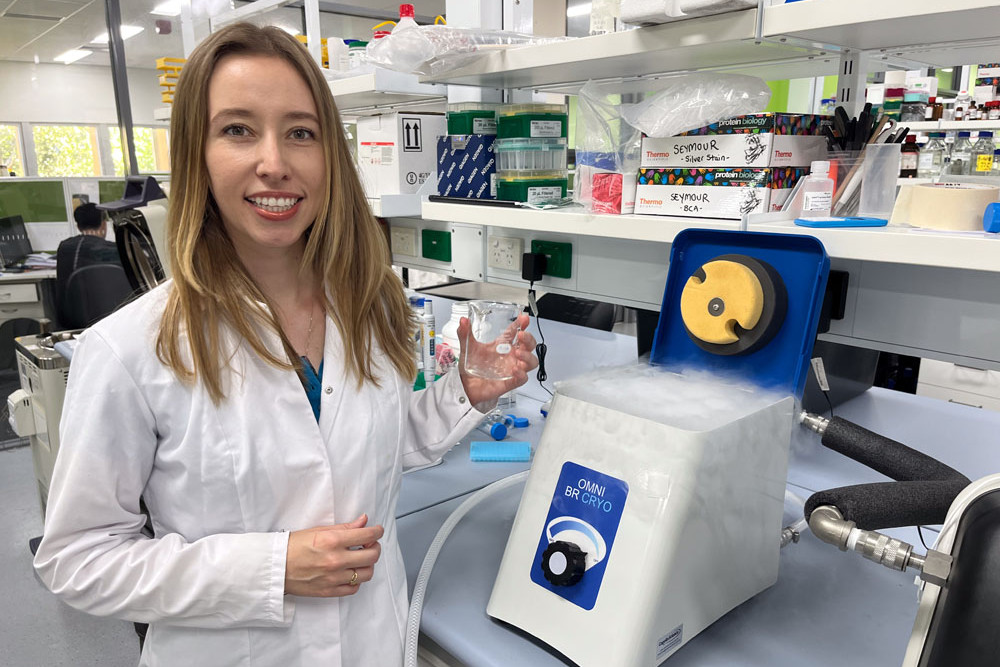Community
1 April, 2025
No sting in this tale of generous Far Northerners
THE latest technology to extract venom from box jellyfish and Irukandji has arrived in the Far North – helping researchers combat injuries caused by the stingers.

The $25,000 bead mill homogeniser funded by the Far North Queensland Hospital Foundation will allow James Cook University’s world-renowned jellyfish expert Prof Jamie Seymour and PhD candidate Emily O’Hara to extract venom in greater quantities than before.
“Far North Queensland is home to two of the most dangerous species of jellyfish in the world – the big box jellyfish possesses venom capable of killing an adult human in less than two minutes,” she said.
“The Irukandji jellyfish inflicts a torturous condition on its victims which presents as severe muscle pains, vomiting and has previously caused fatalities through intercranial haemorrhages.”
Ms O’Hara said the team at JCU’s Tropical Australian Stinger Research Unit was currently the only organisation in Australia that regularly collected and extracted big box jellyfish (Chironex fleckeri) venom and the only scientists in the world extracting venom from Irukandji jellyfish (Carukia barnesi), supplying both venoms for in-house and external researchers as well as for anti-venom production.
“We supply the only company developing box jellyfish antivenom, and our team leader and senior researcher Professor Jamie Seymour has many clinical research collaborations with Cairns healthcare professionals, all stemming from the venom we collect. This includes developing novel sting treatments and most recently, using a compound of box jellyfish venom to treat arthritis,” said Ms O’Hara.
She said the equipment currently involved in the venom extraction process had limitations, inducing significant heat build-up within the venom which can affect the biological activity of the venom components.
“More technologically advanced equipment is now available which maintains the venom at a stable cold temperature throughout the extraction process.”
Foundation CEO Gina Hogan said Ms O’Hara’s grant formed part of $218,000 funded by the organisation in 2023 – its second annual research funding round.


